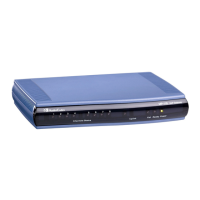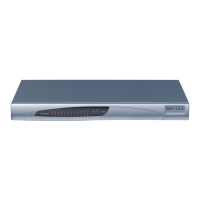this range). The default port is 443.
Note: For this parameter to take effect, a device reset is
required.
Web/EMS: HTTPS Cipher String
[HTTPSCipherString]
Defines the Cipher string for HTTPS (in OpenSSL cipher list
format). For the valid range values, refer to URL
http://www.openssl.org/docs/apps/ciphers.html.
The default value is ‘RC4:EXP’ (Export encryption algorithms).
For example, use ‘ALL’ for all ciphers suites (e.g., for ARIA
encryption for TLS). The only ciphers available are RC4 and
DES, and the cipher bit strength is limited to 56 bits.
Note: For this parameter to take effect, a device reset is
required.
Web: HTTP Authentication Mode
EMS: Web Authentication Mode
[WebAuthMode]
Determines the authentication mode used for the Web interface.
[0] Basic Mode = (Default) Basic authentication (clear text) is
used.
[1] Digest When Possible = Digest authentication (MD5) is
used.
[2] Basic if HTTPS, Digest if HTTP = Digest authentication
(MD5) is used for HTTP, and basic authentication is used for
HTTPS.
Note: When RADIUS login is enabled (i.e., the parameter
WebRADIUSLogin is set to 1), basic authentication is forced.
[HTTPSRequireClientCertificate]
Determines whether client certificates are required for HTTPS
connection.
[0] = (Default) Client certificates are not required.
[1] = Client certificates are required. The client certificate
must be preloaded to the device and its matching private key
must be installed on the managing PC. Time and date must
be correctly set on the device for the client certificate to be
verified.
Notes:
For this parameter to take effect, a device reset is required.
For a description on implementing client certificates, see
'Client Certificates' on page 96.
[HTTPSRootFileName]
Defines the name of the HTTPS trusted root certificate file to be
loaded using TFTP. The file must be in base64-encoded PEM
(Privacy Enhanced Mail) format.
The valid range is a 47-character string.
Note: This parameter is applicable only when the device is
loaded using BootP/TFTP. For information on loading this file
using the Web interface, refer to the Product Reference Manual.
[HTTPSPkeyFileName]
Defines the name of a private key file (in unencrypted PEM
format) to be loaded from the TFTP server.

